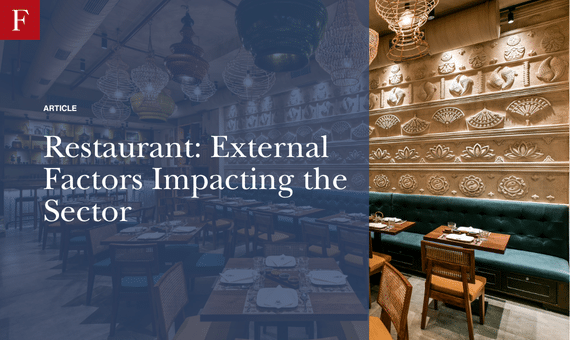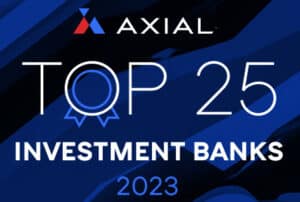
Restaurant: External Factors Impacting the Sector
The U.S. restaurant industry in 2025 is navigating a complex macro environment. Despite projected sales reaching $1.5 trillion and rising consumer demand for convenience and experience, external forces, from inflation and high interest rates to evolving consumer habits and climate volatility, are reshaping the industry’s strategy, operations, and profitability.
Restaurants are under pressure to balance rising costs with consumer price sensitivity, while keeping up with technology, regulatory changes, and labor expectations. Below, we examine the most significant external factors influencing the restaurant landscape this year.
Inflation: Climate, Tariffs, and Geopolitics
As of June 2025, inflation remains stubborn. The Consumer Price Index rose 2.7% year-over-year, with “food away from home” prices up 3.8%. Climate-related disruptions, such as extreme droughts, hurricanes, and the spread of avian flu, have affected meat and produce supply chains, driving wholesale food costs higher.
Geopolitical developments also play a major role. The reintroduction of tariffs on imports from Mexico, Brazil, China, and Canada have made ingredients, packaging, and equipment more expensive. For example, the 17% tariff on Mexican tomatoes is impacting salsa, salad, and sauce costs across the board. The restaurant supply chain is now far more exposed to trade policy volatility than it was pre-2020.
Credit Conditions & Rising Cost of Capital
With interest rates in the 4.25 – 4.50% range, access to affordable financing has tightened.4 Many smaller or regional operators are struggling to refinance loans or fund expansion. High debt costs are also limiting consumer discretionary spending, particularly at higher-end establishments. As a result, operators are focusing on value, loyalty programs, and delivery-friendly formats, that better withstand demand fluctuations.
Labor: Staffing Strains & Wage Pressures
Labor remains one of the largest challenges in 2025. Restaurant wages continue to rise as the industry competes with retail, logistics, and healthcare for frontline workers. Full-service restaurants are especially impacted due to their labor-intensive nature and consumer expectations, with 64% of diners say ambiance and service matter more than price.
Adding to cost pressure is immigration enforcement, with a series of ICE raids on farms and agricultural processing centers in early 2025 significantly disrupting seasonal labor availability. This has led to higher produce prices and delayed shipments for restaurant suppliers. According to the American Farm Bureau, some crops, like strawberries and lettuce, experienced up to 15% labor shortages, further tightening supply.
Off-Premises Dominance & App-Led Discovery
One of the most profound consumer shifts in 2025 is the dominance of off-premises dining. According to recent surveys:
- 75% of Americans prefer drive-thru, delivery, or takeout over dine-in experiences.1
- 57% prefer ordering food to eating at a restaurant.
- 51% use restaurant apps for deals and loyalty rewards.
Mobile ordering now accounts for 60% of digital restaurant sales, and 1 in 3 diners use Google to discover new places to eat. This has elevated the importance of tech integration, not just in AI, but in user-friendly apps, digital payment, and text-driven marketing.
Tariffs & Supply Chain Complexity
Restaurants are increasingly vulnerable to global logistics and trade tensions. In addition to food tariffs, rising steel and aluminum costs (due to import taxes) have made kitchen equipment and renovations more expensive. The reinstatement of tariffs on Brazilian beef is expected to impact quick-service burger chains in particular.
Operators are responding by diversifying suppliers, building direct farm relationships, and shifting to domestic or regional sourcing where possible. While these moves help mitigate volatility, they often result in higher baseline costs.
Financial Stress & Sector Consolidation
Several high-profile chains, including Red Lobster, TGI Fridays, and Rubio’s, have filed for bankruptcy or shuttered hundreds of units in 2025. Many cited lease pressures, labor costs, and softening consumer spending. Hooters of America filed for Chapter 11 and sold over 100 company-owned stores to franchisees.
In contrast, well-capitalized multi-brand groups like Roark Capital, Flynn Restaurant Group, and Craveworthy Brands are actively acquiring distressed or growth-ready concepts, particularly in the QSR and fast-casual segments, which offer scalability and tech compatibility. Deals for public companies have averaged 9x EBITDA in 2025, with over 90 M&A transactions per quarter.
Climate & Political Instability
The restaurant industry is increasingly exposed to global political risks and climate events. Trade wars and retaliatory tariffs not only increase food costs but also dampen international investor confidence. Climate change, through rising insurance costs, supply chain interruptions, and weather-related property damage, is becoming a boardroom issue.
Wildfire smoke events and water shortages in the South-West, as well as frequent hurricanes in the South-East, are already leading to temporary closures and food spoilage. Some cities have even considered regulating outdoor dining to address heat waves, which may affect foot traffic and seasonal revenue.
Health Trends & Customization Driving Menu Changes
The growing demand for health-conscious, allergy-aware, and customizable options is influencing restaurant strategy across formats. Plant-based proteins, gluten-free substitutes, and keto or low-sugar choices are no longer niche, but expected by many diners, especially younger consumers and urban professionals. Almost 50% prefer healthy menu options and are more likely to choose restaurants with this choice.
According to a 2025 industry survey, 75% of consumers say they customize their orders, and restaurants report stronger margins on “build-your-own” meals that reduce waste and increase perceived value. 11 This shift has also expanded sourcing complexity, with restaurants turning to specialty suppliers and regional producers to meet evolving dietary needs while maintaining speed and scale.
Conclusion
The U.S. restaurant sector in 2025 stands at a crossroads. While demand is strong and innovation is accelerating, the external environment is volatile and costly. Restaurants will emerge stronger if they can adapt by:
- Streamlining costs through app-based and off-premises dining,
- Building supply chain flexibility,
- Navigating labor and regulatory risks,
- And maintaining financial resilience,
Amid inflationary pressure, climate risk, and evolving consumer expectations, agility, not just growth, is the defining competitive advantage.














